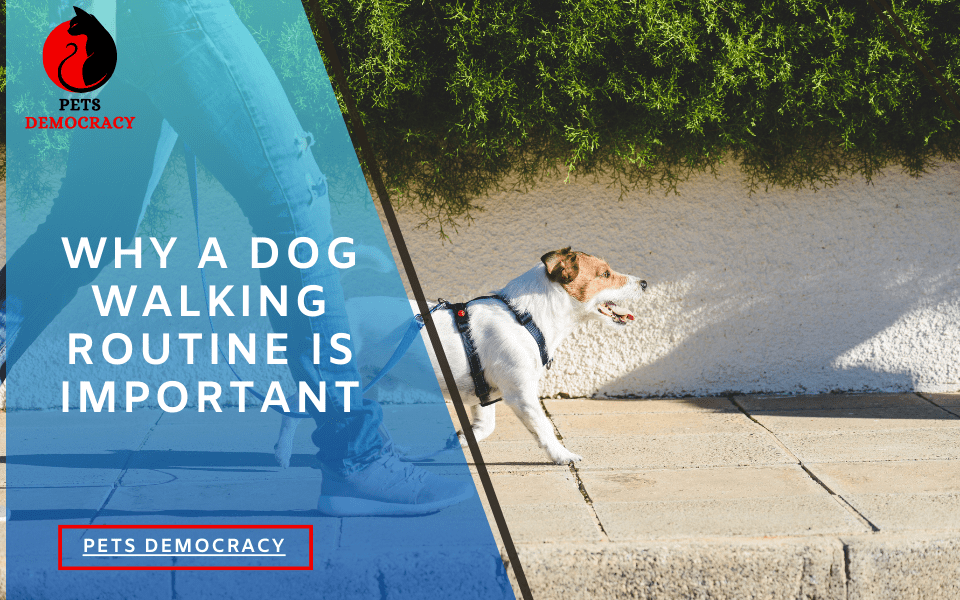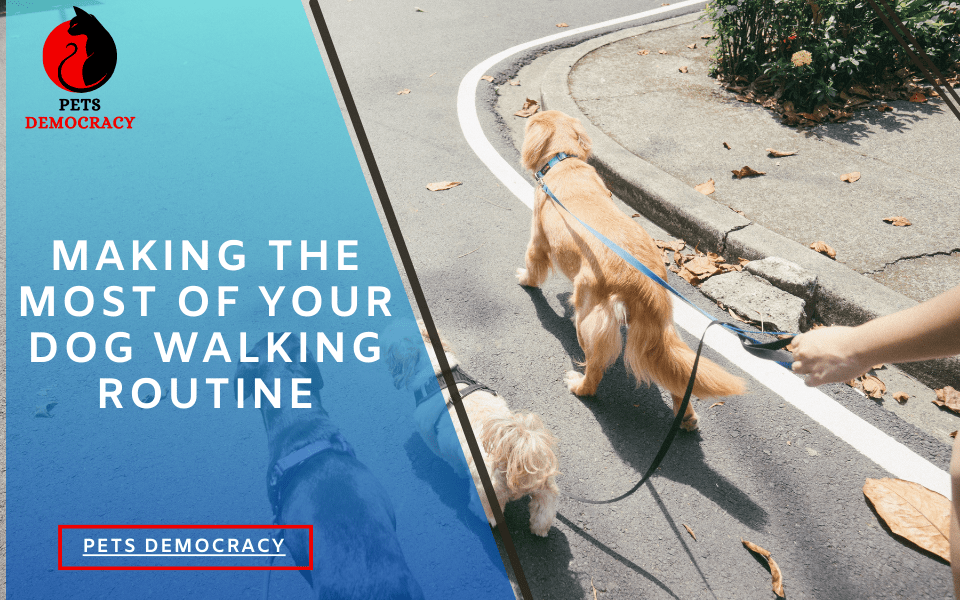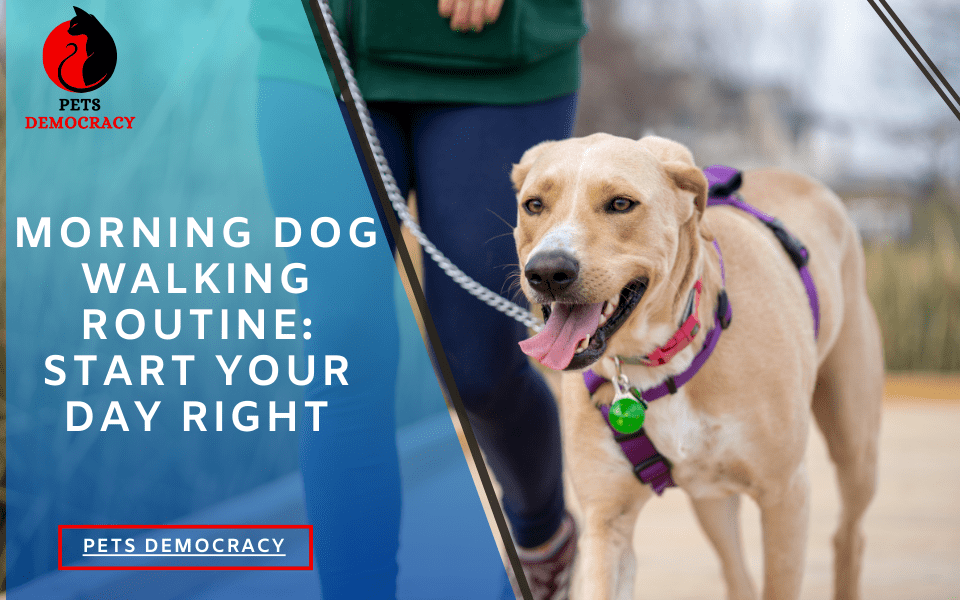
Creating a consistent dog walking routine is essential for the health and happiness of your furry friend. Regular walks provide necessary exercise, mental stimulation, and an opportunity for your dog to socialize.
In this comprehensive guide, we’ll explore the steps to develop a dog walking routine that fits your schedule and meets your dog’s needs.
Why a Dog Walking Routine is Important

A structured dog walking routine benefits both you and your dog. It helps manage your dog’s energy levels, supports good behavior, and improves overall well-being.
Regular walks can prevent obesity, reduce anxiety, and strengthen the bond between you and your pet.
Establishing a consistent routine also ensures your dog knows when to expect their daily exercise, creating a sense of security and stability.
Steps to Develop a Dog Walking Routine
1. Assess Your Dog’s Needs
Every dog is unique, and their exercise needs vary based on breed, age, health, and energy level. High-energy breeds like Border Collies or Labrador Retrievers may require more frequent and longer walks, while smaller or older dogs might need shorter, less intense outings.
2. Create a Schedule
Consistency is key to a successful dog walking routine. Choose specific times of day that fit your schedule and stick to them.
Many dog owners find that a morning dog walking routine works best, providing their pets with an energy outlet before they start their day.
Whether you prefer morning, afternoon, or evening walks, make sure they are spaced evenly throughout the day to keep your dog content and balanced.
3. Incorporate Dog Walking Exercises
To make your walks more engaging and beneficial, incorporate dog walking exercises. These can include:
- Interval Walking: Alternate between brisk walking and slow strolling.
- Obedience Training: Practice commands like sit, stay, and heel during your walk.
- Fetch: Bring a toy or ball and play a game of fetch in a safe area.
- Agility Drills: Use park benches, curbs, or playground equipment for agility exercises.
These activities not only provide physical exercise but also stimulate your dog’s mind, preventing boredom and promoting good behavior.
Morning Dog Walking Routine: Start Your Day Right

Benefits of a Morning Dog Walking Routine
Starting your day with a morning dog walking routine has numerous benefits. It sets a positive tone for the day, ensures your dog is calm and content while you’re away, and gives both of you a chance to enjoy the fresh air and morning tranquility.
Tips for an Effective Morning Dog Walking Routine
- Wake Up Early: Give yourself enough time to enjoy a leisurely walk without feeling rushed.
- Prepare the Night Before Lay out your walking gear, such as a leash, harness, and poop bags, to streamline your morning routine.
- Stay Safe: Wear reflective gear if it’s still dark outside, and keep your dog on a leash to prevent accidents.
- Hydrate: Ensure both you and your dog have had some water before heading out.
Adjusting Your Dog Walking Routine for Different Seasons
Adapting to Summer and Winter
Seasonal changes can affect your dog’s walking routine. In summer, walk during cooler parts of the day to avoid overheating. In winter, consider the shorter daylight hours and dress your dog in appropriate gear to protect them from the cold.
Indoor Alternatives
On days when the weather is too harsh for outdoor walks, find indoor alternatives. These can include playing games, practicing obedience training, or setting up an indoor obstacle course.
Making the Most of Your Dog Walking Routine

Socialization Opportunities
Walks are an excellent opportunity for your dog to socialize with other dogs and people. This helps improve their social skills and reduces anxiety around unfamiliar animals and humans.
Exploring New Routes
To keep your dog’s walking routine interesting, explore different routes. Discover new parks, trails, and neighborhoods. The variety in scenery and scents will keep your dog engaged and excited.
Tracking Progress
Use a dog walking app or a simple journal to track your walks. Note the duration, distance, and any observations about your dog’s behavior and health.
This can help you adjust your routine as needed and ensure your dog is getting the appropriate amount of exercise.
FAQs About Dog Walking Routine
How long should each walk be?
The duration of walks varies. For most dogs, 30 minutes to an hour is sufficient. Puppies and senior dogs may need shorter, more frequent walks.
Can I skip walks on rainy days?
While it’s okay to skip a walk occasionally due to the weather, try to find indoor activities to keep your dog engaged. Use interactive toys, play fetch indoors, or practice obedience training.
What should I do if my dog pulls on the leash?
If your dog pulls on the leash, practice leash training techniques. Stop walking when they pull, and resume only when they calm down. Reward them for walking beside you.
How can I make walks more interesting for my dog?
Incorporate dog walking exercises, explore new routes, and allow your dog to sniff and investigate their surroundings. Bring toys or treats to keep them engaged.
Should I let my dog off-leash during walks?
Only let your dog off-leash in designated off-leash areas where it’s safe and legal. Ensure your dog has reliable recall training before allowing them off-leash.
Conclusion
Developing a successful dog walking routine requires understanding your dog’s needs, creating a consistent schedule, and incorporating engaging exercises.
Whether you opt for a morning dog walking routine or vary your walks throughout the day, the key is consistency and making the walks enjoyable for both you and your dog.


